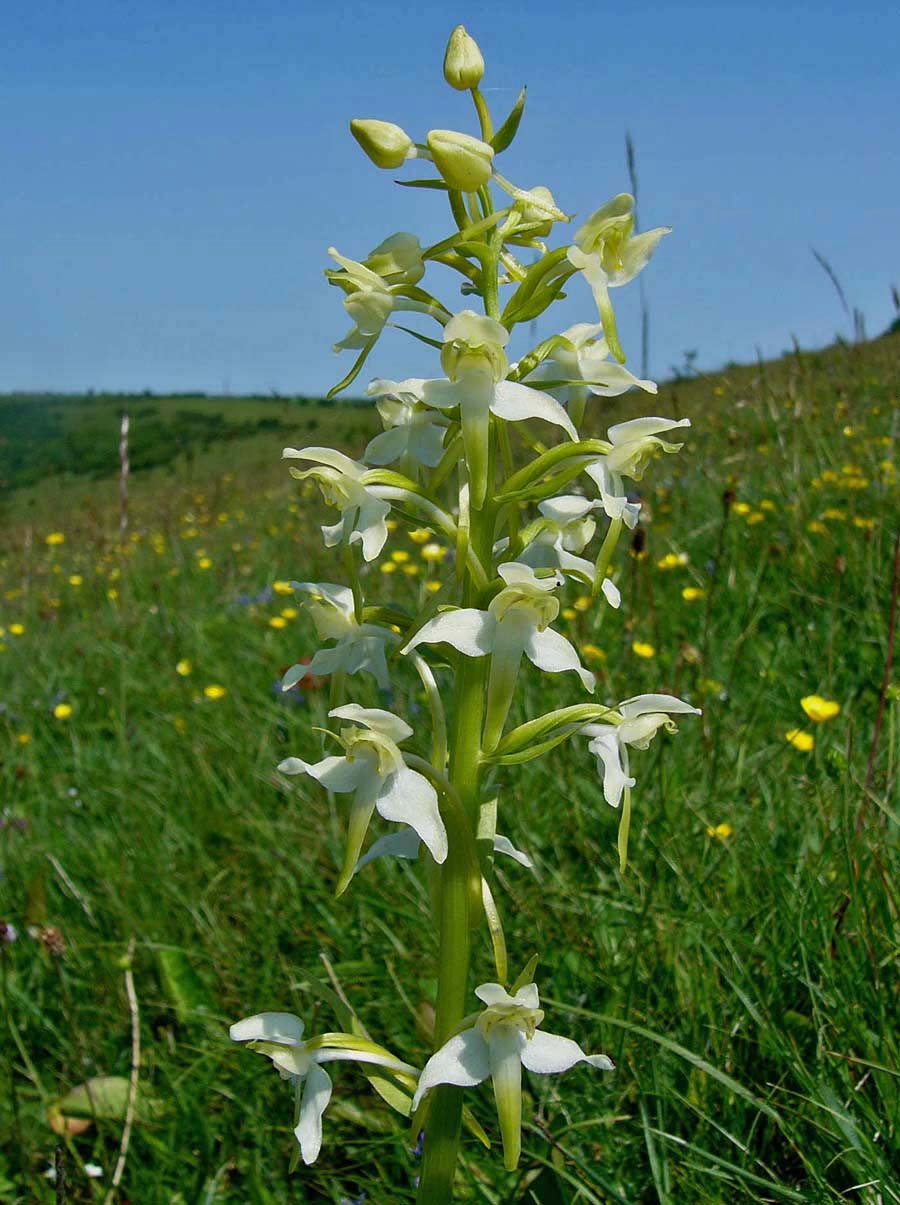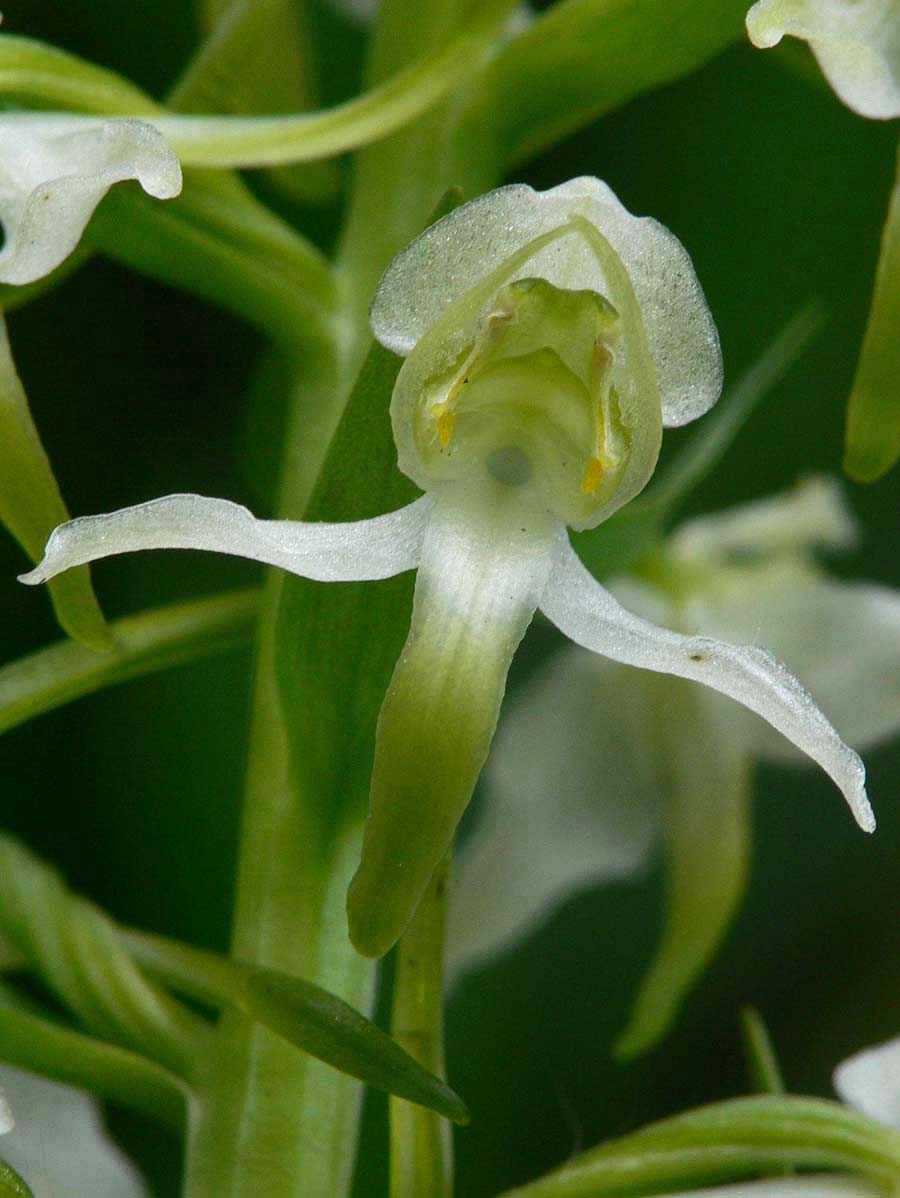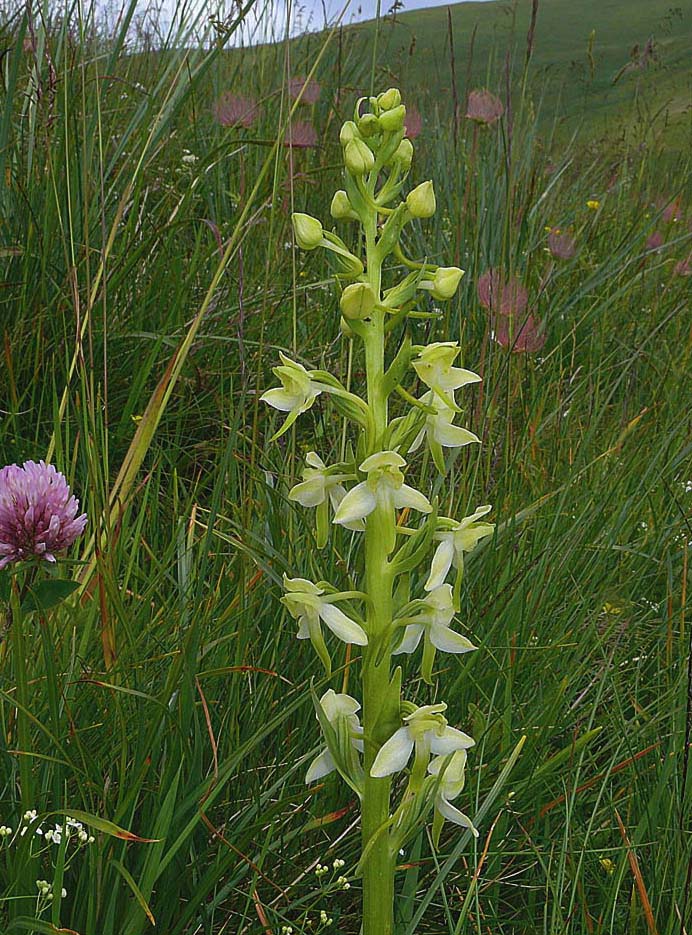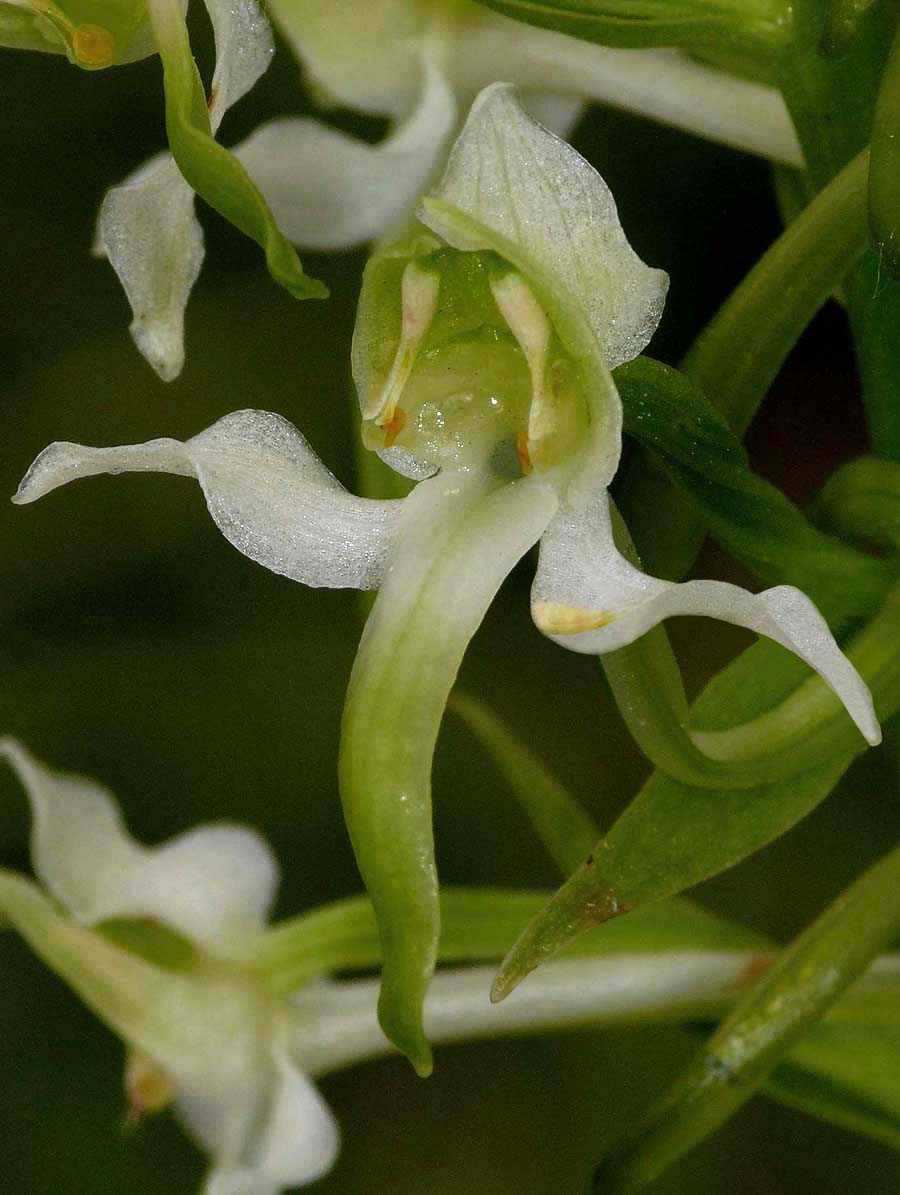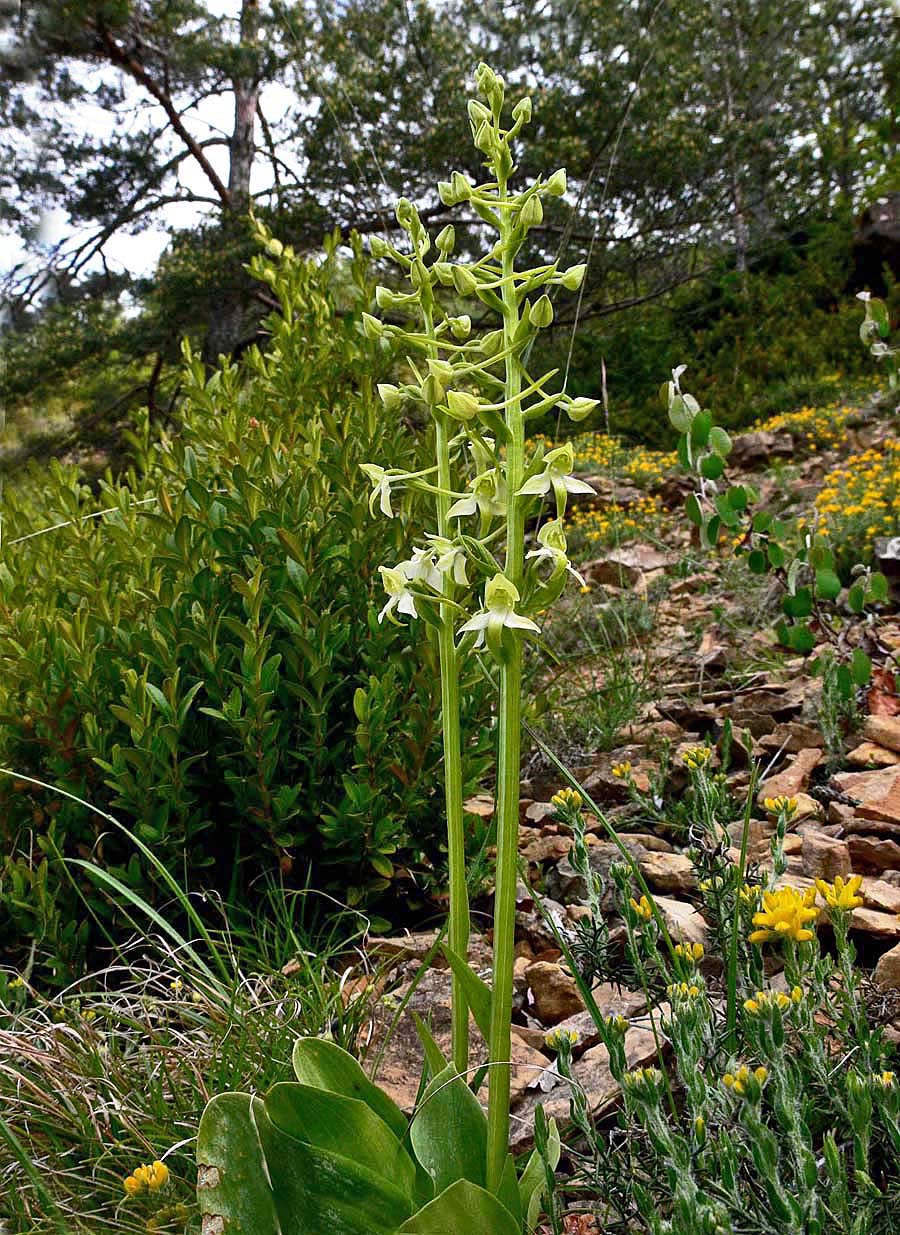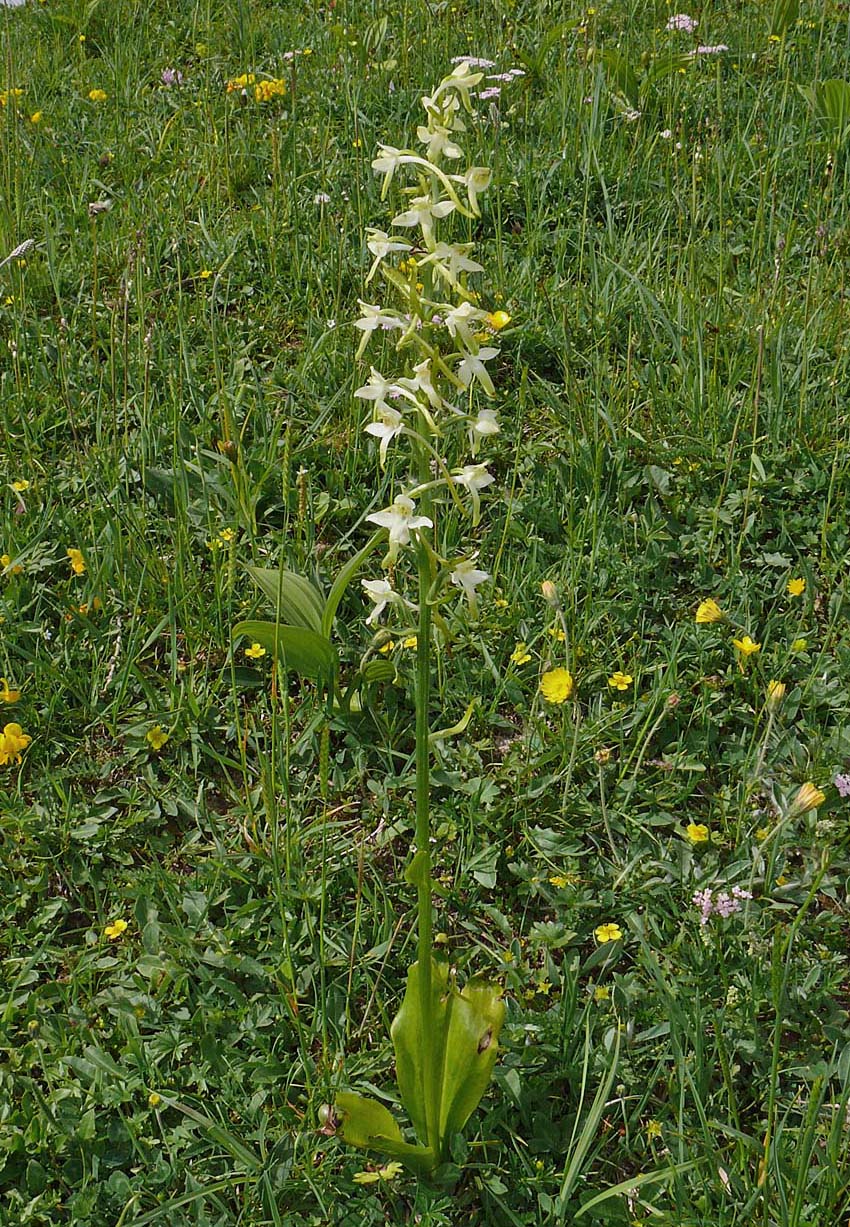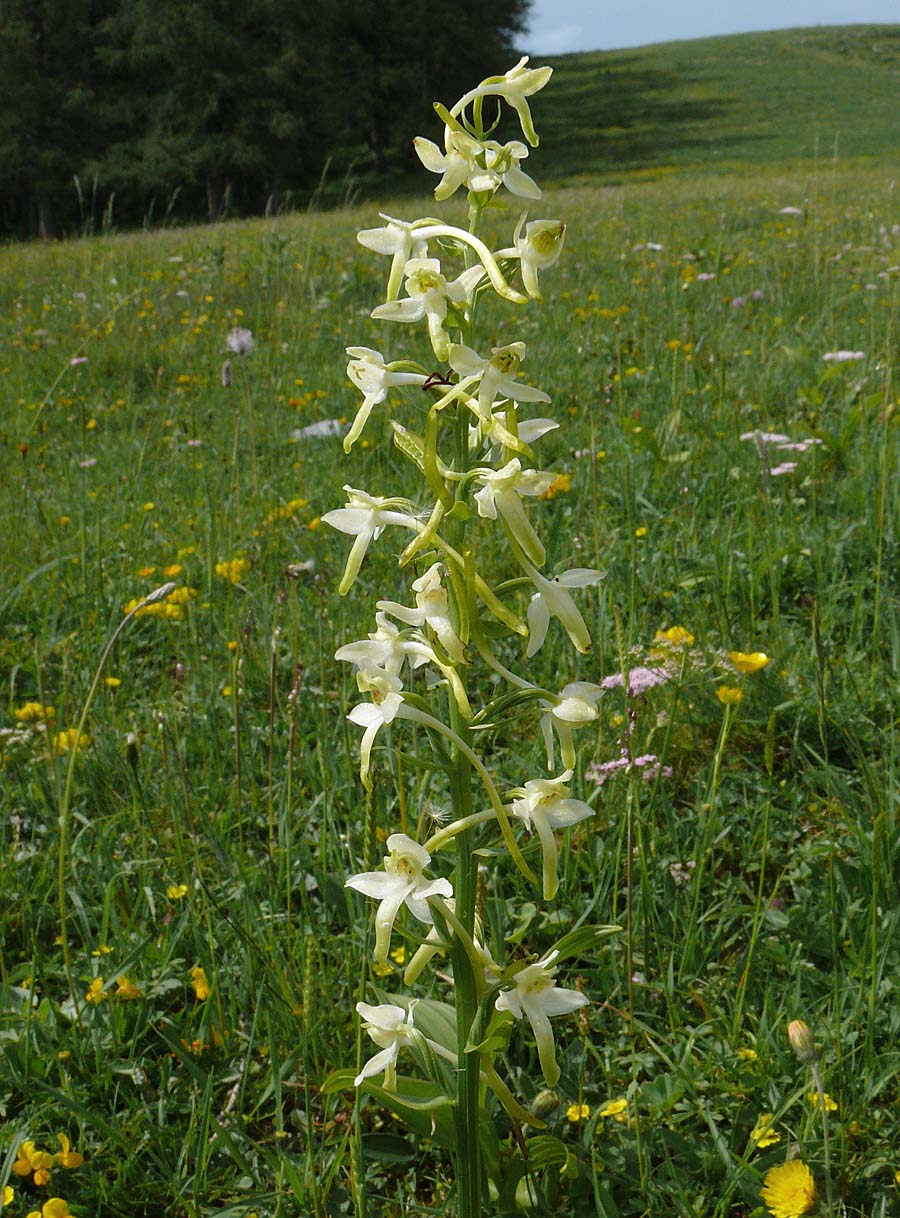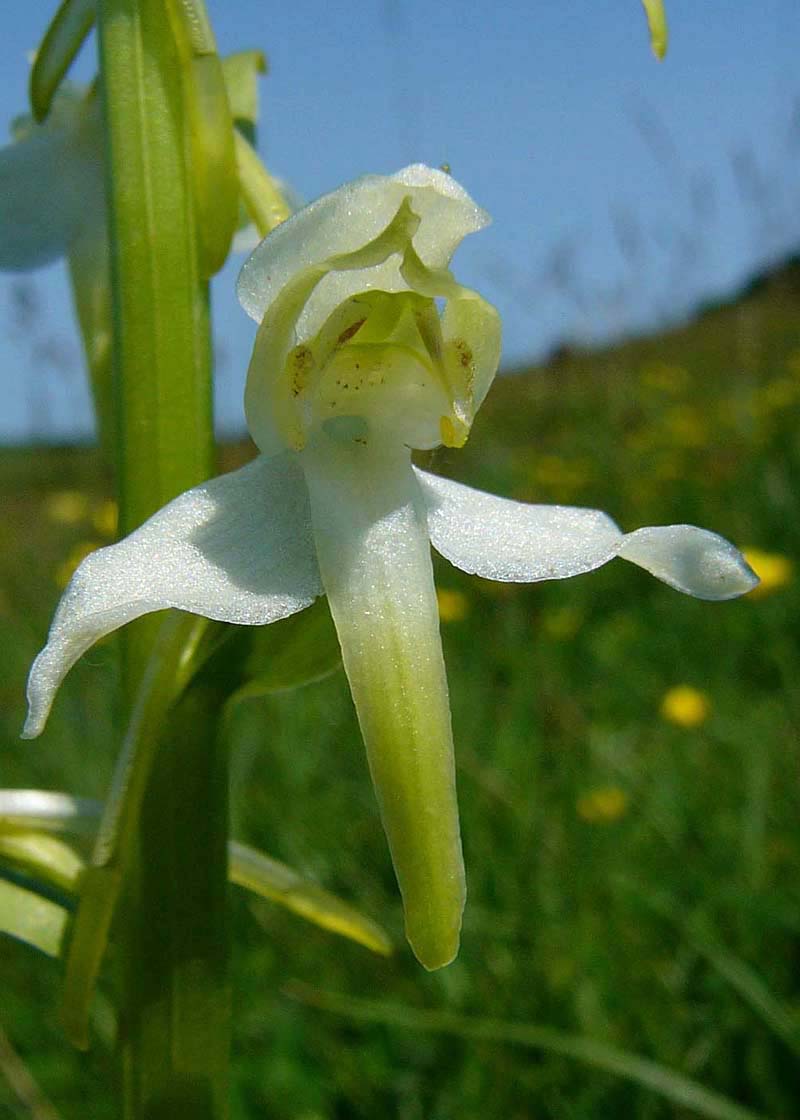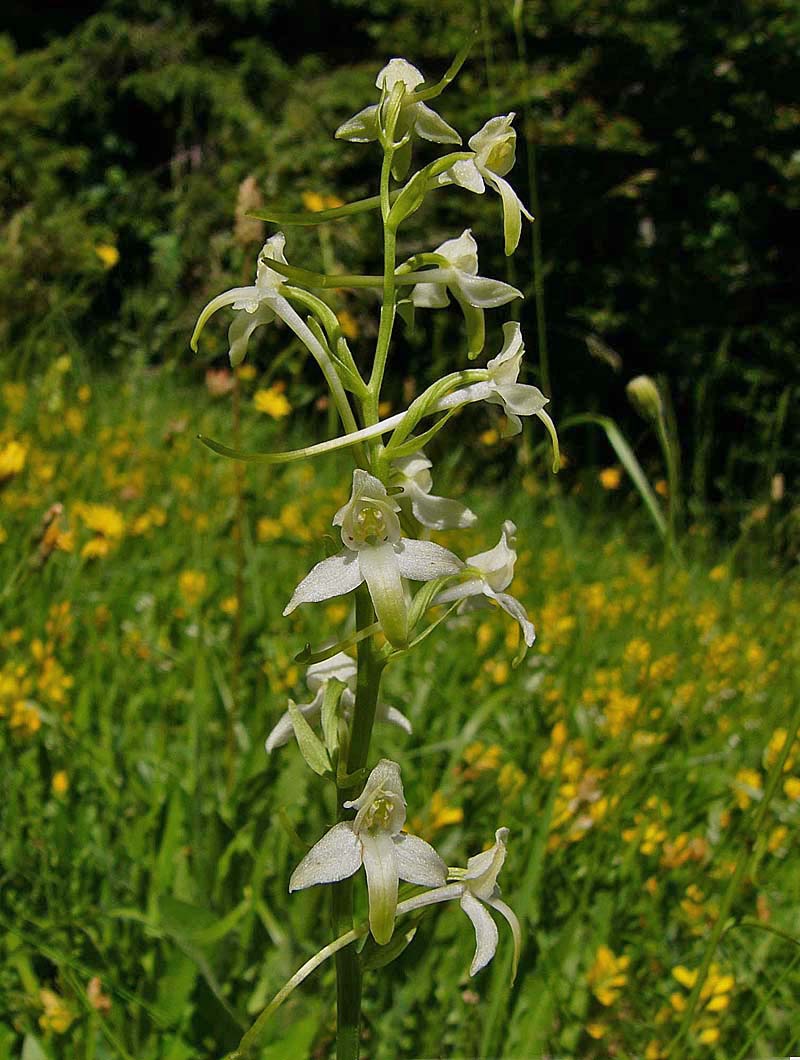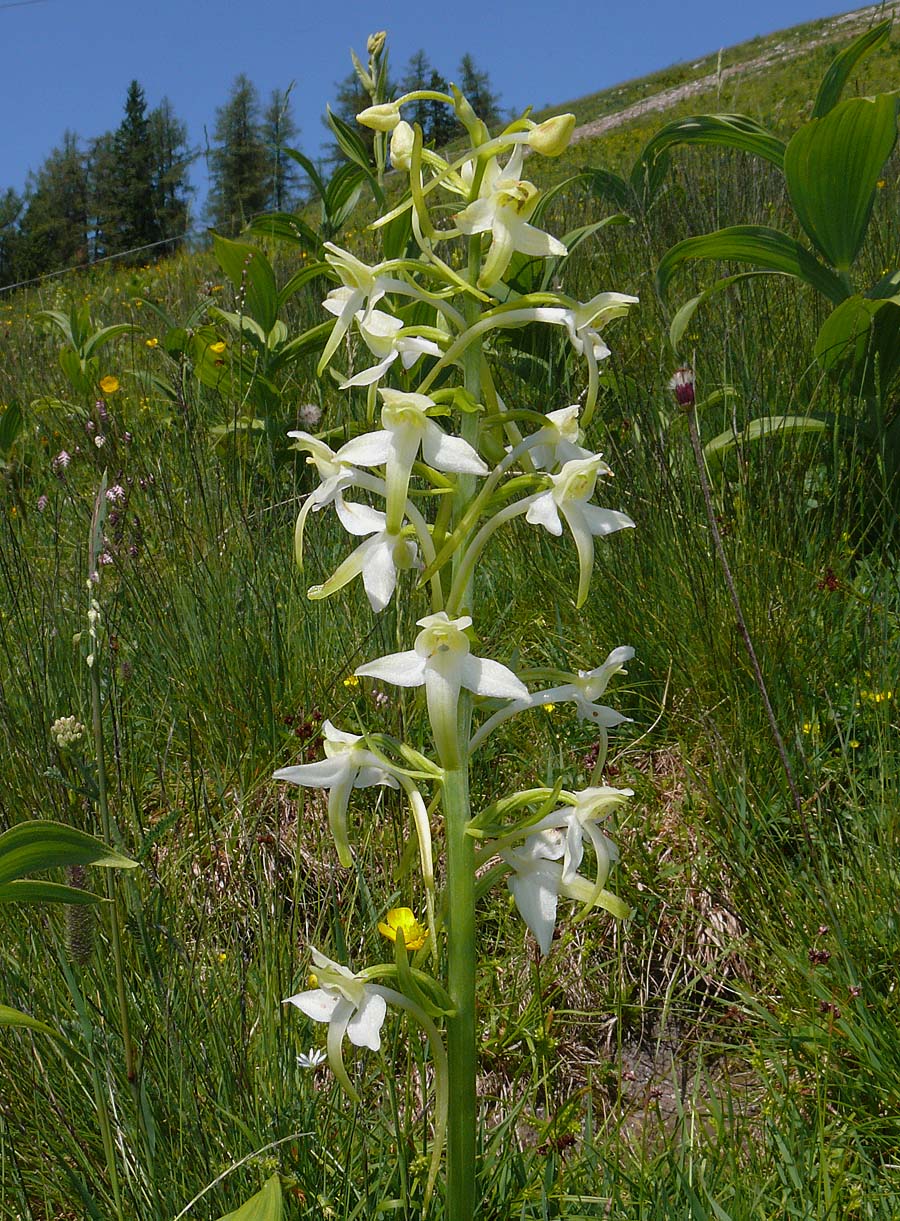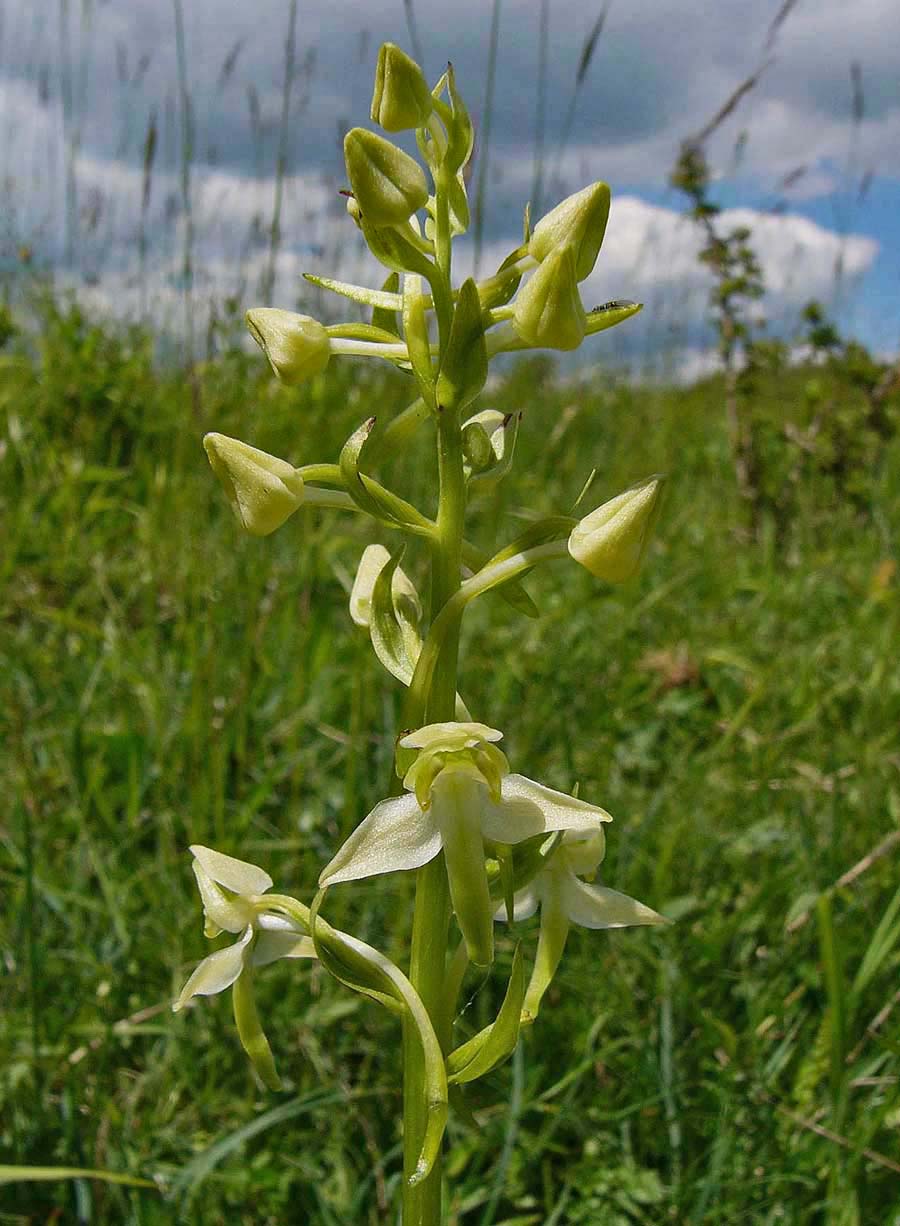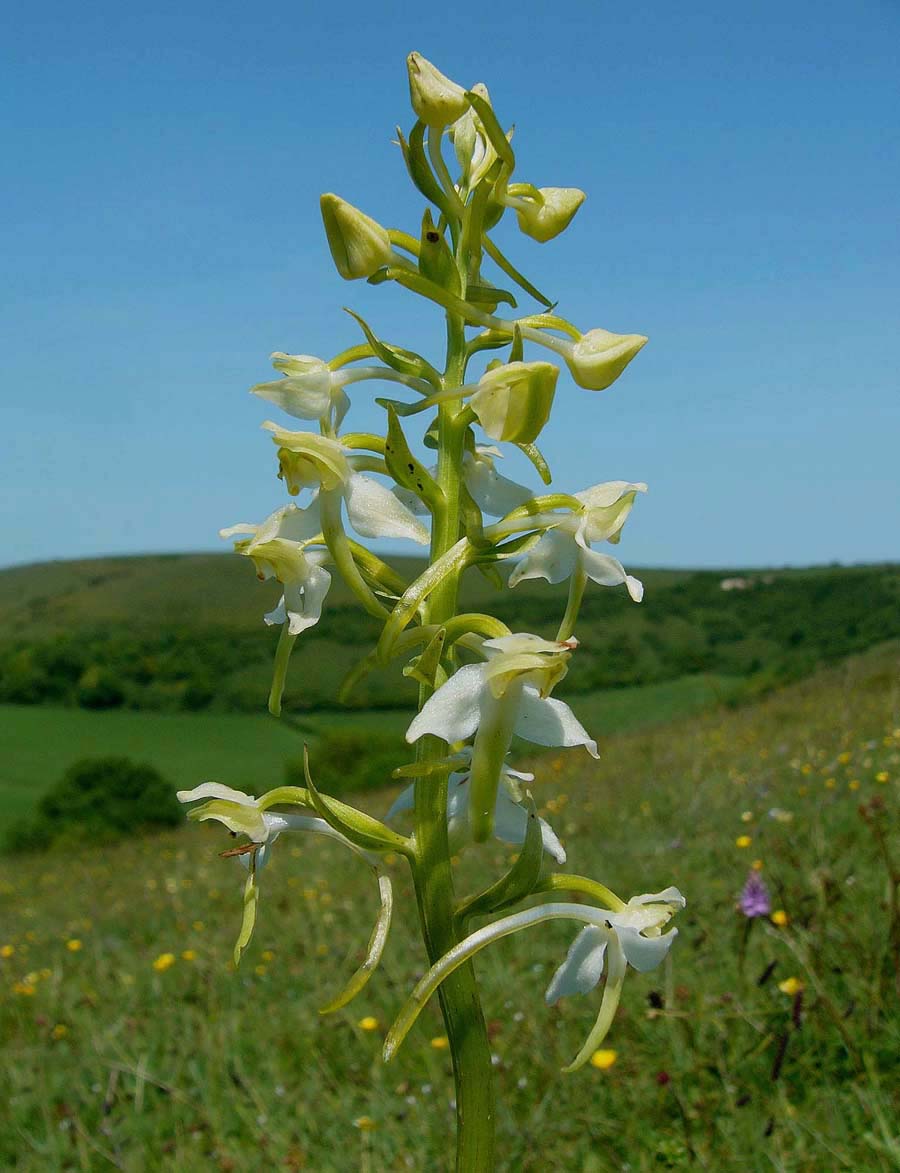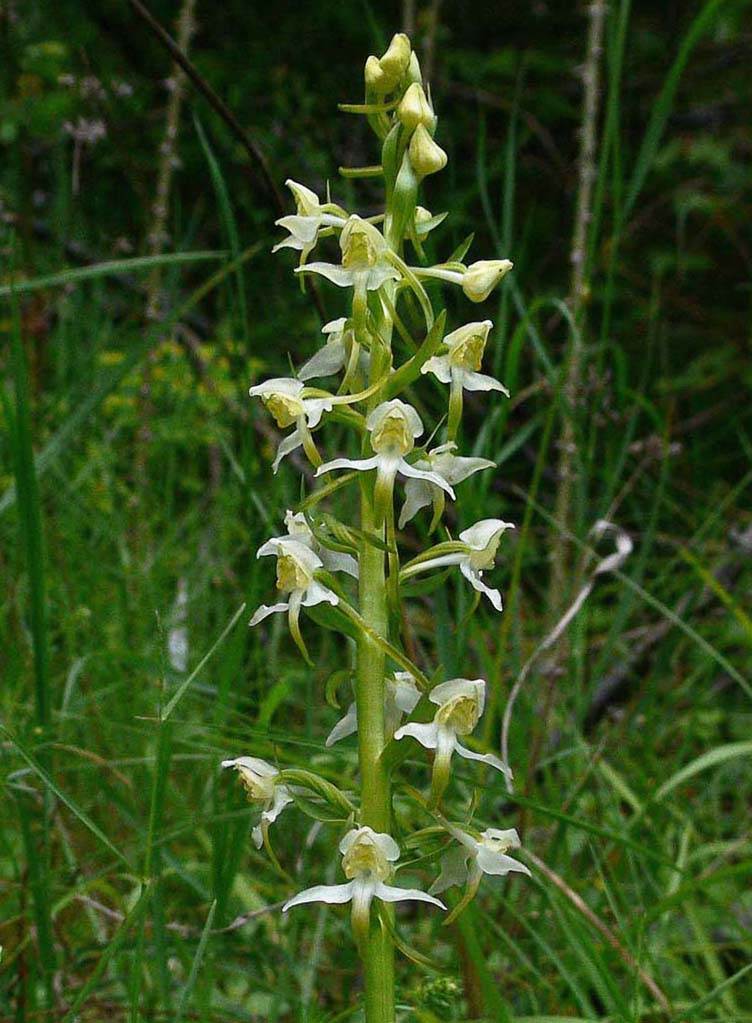P. chlorantha was first described by Custer from Switzerland in 1827 and takes its
name from the overall greenish colouration of the flowers. The genus Platanthera comprises approximately one hundred species, the majority of which are found in Asia and the Americas.
Although only eight species of this genus occur in Europe, P. chlorantha or the Greater Butterfly Orchid is
one of Europe's most widespread orchids, occurring
throughout the continent as well as in parts of north Africa and the
near east. This species produces highly scented flowers, that are at
their most productive at night, thus ensuring they are pollinated almost exclusively by night flying moths. Another
factor which serves to encourage crepuscular visitation is the way in
which the plants white flowers, somewhat eerily stand out in the dark.
Nectar is stored in the very long spur and consequently can only be
accessed by an insect with a long proboscis, again restricting the
variety of insects that will be attracted to the plant.
This is a distinctive species, that can easily be confused with its close relative P. bifolia, the Lesser Butterfly Orchid. They are indeed very similar and the most effective way of separating the two species is by inspection of the pollinia housing which in P. bifolia is vertically parallel, in P. chlorantha divergent at the base. The two species flower at similar times in May and June but have differing habitat preferences, the former being found in open situations on neutral and mildly acidic substrates whilst the latter is rarely found away from alkaline conditions. Other distinguishing characteristics of P. chlorantha are the larger size of the flowers and the tendency for them to be greener than those of P. bifolia. The pictures are from England and continental Europe, dating from the middle of June to early July.
This is a distinctive species, that can easily be confused with its close relative P. bifolia, the Lesser Butterfly Orchid. They are indeed very similar and the most effective way of separating the two species is by inspection of the pollinia housing which in P. bifolia is vertically parallel, in P. chlorantha divergent at the base. The two species flower at similar times in May and June but have differing habitat preferences, the former being found in open situations on neutral and mildly acidic substrates whilst the latter is rarely found away from alkaline conditions. Other distinguishing characteristics of P. chlorantha are the larger size of the flowers and the tendency for them to be greener than those of P. bifolia. The pictures are from England and continental Europe, dating from the middle of June to early July.
